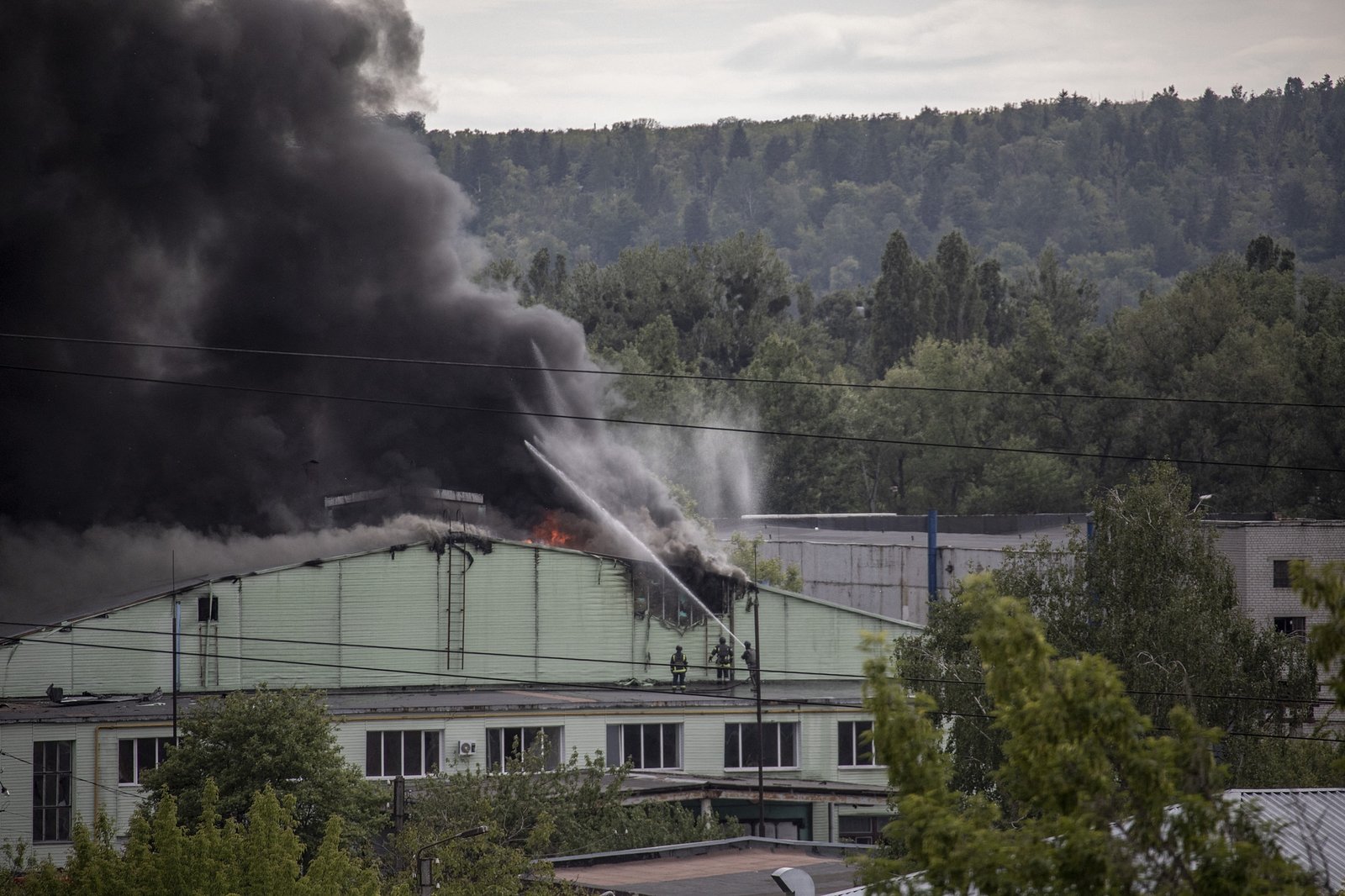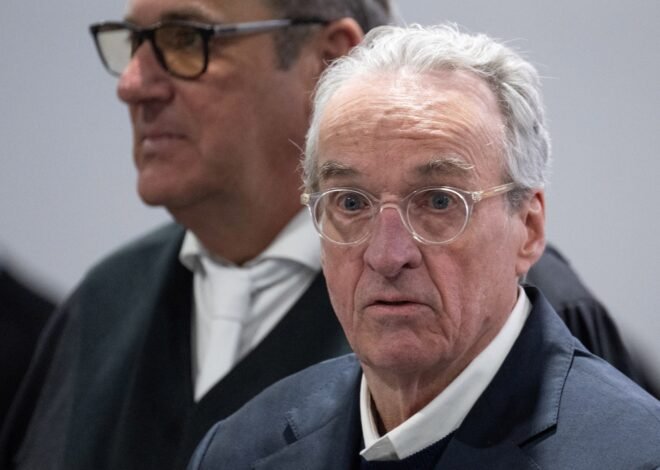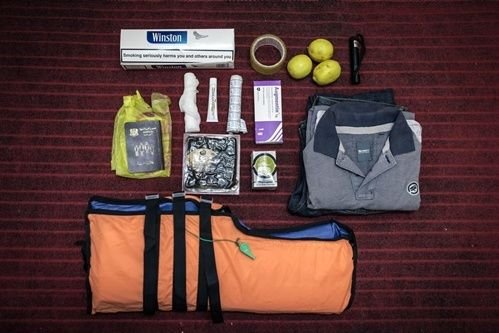
The reason Ukraine struggled to fend off Russia in Kharkov
Ukraine was unable to build a solid defense line in Kharkov due to continuous bombardment by Russia and a lack of ammunition to respond, causing them to quickly lose ground when Moscow launched an attack.
Ukraine’s 125th Territorial Protection Brigade is stationed on a strip of land about 43 km long along the border between the Kharkiv region, the country’s northeast, and Russia.
Starlink devices, the satellite Internet network that the Ukrainian military relies on for communication, have been disabled for the first time since Russia launched its campaign in the country in February 2022.
`There were times when we were completely blind,` said the commander of the Ukrainian UAV unit, codenamed Artist.
The feed from the UAV `simply disappeared,` Artist, 53, said.
Smoke rose after a Russian raid on Kharkov on May 17.
In just 6 days, Russia has controlled about 260 square kilometers of territory along the border, taking advantage of a time when the Ukrainian army is particularly vulnerable.
A vital US aid package, which includes valuable ammunition for artillery and air defense, stalled in Congress for more than half a year before being approved last month, leaving Ukrainian forces on the front lines
Meanwhile, although soldiers have continuously complained for months about manpower shortages and extreme fatigue after more than two years of persistent fighting, the Ukrainian government has delayed mobilizing new troops, causing a
But Russia’s recent battlefield victories did not only stem from Ukraine’s difficulties.
Ukraine’s military must grudgingly admit that its opponents have adapted better and become more clever, especially with technological advances such as electronic warfare.
Defeats in Kharkov and the eastern Donetsk region are raising questions about the effectiveness of Ukraine’s defense forces, whether they can realize their promise to completely repel the enemy or whether Russia will soon overwhelm them.
The latest offensive on Kharkiv forced Ukraine to redirect some reserves north, potentially endangering other positions.
Artist, commander of the UAV unit of Brigade 125, said Ukraine cannot build the solid defense model that is being promoted by the government and military commanders.
Last summer, Russia prevented Ukraine’s counterattack thanks to a multi-layered defense system consisting of `dragon tooth` anti-tank pyramids, minefields and concrete-reinforced trenches.
However, Artist and other soldiers said that every time units stationed in Kharkiv tried to build fortified lines, Russian forces used UAVs to track and then bombard them.
Due to delays in the US aid package, Ukrainian soldiers lack the means to fire back and cannot spend time building stronger defenses.
Artist said soldiers in the unit often dug trenches with shovels at night.
`Because the soil here is very hard, machines are needed to dig through and establish concrete fortifications,` Artist explains.
Russia chose its attack points intelligently, moving between rivers that could serve as natural shelters.
The attack on Vovchansk, a small city that Russian troops have penetrated, could create a path for them to advance towards Kupyansk, a city that Ukrainian forces regained control of in September 2022.
Meanwhile, the second attack towards the village of Liptsy will help Russia reach a position where it can shell the capital Kharkov, Ukraine’s second largest city.

Russian offensive positions in Kharkov province.
The scale and goals of Russia when launching a new offensive campaign into Kharkov province are still unclear, but experts say that at the current stage, capturing the city of Kharkov is out of reach, partly because Russia also
Russia has increased recruitment of contract soldiers and significantly increased bonuses for those willing to sign up for the front line, up to nearly $10,000 in some areas, about 15 times higher than the average salary.
`Russia sees this as a limited incursion into a ‘buffer zone’, rather than an attempt to control the entire Kharkov province,` said Dara Massicot, senior expert at the Carnegie Endowment’s Russia and Eurasia Program.
The buffer zone is intended to protect Russia’s Belgorod region, close to Kharkov, from continuous attacks from Ukraine.
Massicot said Russian troops fighting in Kharkiv appeared to be drawn from newly trained or reconstituted units in the country, adding that Russia’s priority remained control of the Donetsk region.

Soldiers from the Khartia Brigade analyze maps and feeds from UAVs in Kharkiv on May 15.
However, Ukraine had to send reinforcements from the Donetsk and Lugansk regions to defend Kharkov.
Colonel Ihor Obolyenskyi, commander of Khartia, said the Russian army tried to target the positions of soldiers under his command six times on May 15.
Using tactics similar to those used by Russian forces to take control of the city of Bakhmut last year, infantry groups are attacking Kharkov in waves.
`Previously, they sent groups moving in formations of three people to infiltrate and carry out small attacks. Now they are attacking on a larger scale. In each wave, 20 people run in and throw grenades.
Russia also drops glide bombs, sometimes weighing half a ton, every 15-20 minutes, said the commander of a Khartia reconnaissance unit codenamed Navigator.
Frequent Russian airstrikes forced Ukrainian forces to constantly change positions by at least 300 meters, sometimes multiple times per day.
`I think they’re going to try to go as far as they can,` Navigator said.


